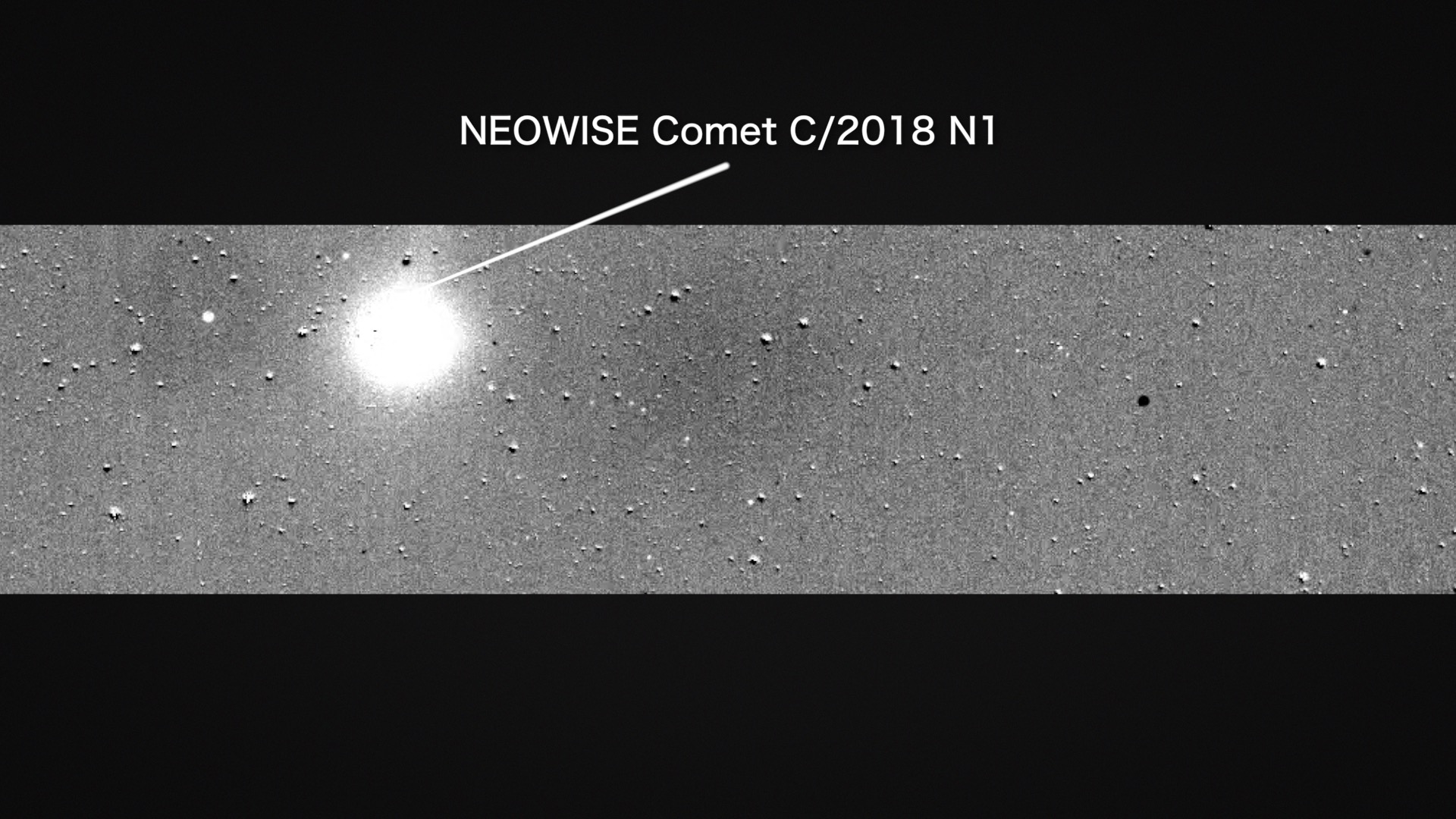NASA Missions Spot Comet NEOWISE
These images from ESA and NASA’s Solar and Heliospheric Observatory show comet NEOWISE as it approached the Sun in late June 2020. The instrument that produced this data is a coronagraph, which uses a solid disk to block out the Sun’s bright face, revealing the comparatively outer atmosphere, the corona, along with objects like comet NEOWISE.
Credit: ESA/NASA/SOHO
NASA’s Parker Solar Probe was at the right place at the right time to capture a unique view of comet NEOWISE on July 5, 2020. Parker Solar Probe’s position in space gave the spacecraft an unmatched view of the comet’s twin tails when it was particularly active just after its close approach to the Sun, called perihelion.
The comet was discovered by NASA’s Near-Earth Object Wide-field Infrared Survey Explorer, or NEOWISE, on March 27. Since then, the comet — called comet C/2020 F3 NEOWISE and nicknamed comet NEOWISE — has been spotted by several NASA spacecraft, including Parker Solar Probe, NASA’s Solar and Terrestrial Relations Observatory, the ESA/NASA Solar and Heliospheric Observatory, and astronauts aboard the Space Station.

An unprocessed image from the WISPR instrument on board NASA’s Parker Solar Probe shows comet NEOWISE on July 5, 2020, shortly after its closest approach to the Sun. The Sun is out of frame to the left. The white streak near the upper left corner of the image is light reflected off a grain of dust that passed through the instrument’s field of view during the observation. The faint grid pattern near the center of the image is an artifact of the way the image is created. The small black structure near the lower left of the image is caused by a grain of dust resting on the imager’s lens.
Credit: NASA/Johns Hopkins APL/Naval Research Lab/Parker Solar Probe/Brendan Gallagher

Processed data from the WISPR instrument on NASA’s Parker Solar Probe shows greater detail in the twin tails of comet NEOWISE, as seen on July 5, 2020. The lower, broader tail is the comet’s dust tail, while the thinner, upper tail is the comet’s ion tail.
Credit: NASA/Johns Hopkins APL/Naval Research Lab/Parker Solar Probe/Guillermo Stenborg

This image of comet NEOWISE was captured by NASA’s Solar and Terrestrial Relations Observatory, or STEREO, on June 24, 2020, as the comet approached the Sun. The comet was visible in the field of view of STEREO’s Heliospheric Imager because of a special observing campaign: STEREO underwent a 180-degree roll on June 24 in order to observe the star Betelgeuse, whose brightness variations over the past several months have intrigued scientists. This image has been processed to increase contrast.
Credit: NASA/STEREO/William Thompson
Credits
Please give credit for this item to:
NASA's Goddard Space Flight Center. However, individual items should be credited as indicated above.
-
Science writer
- Sarah Frazier (SGT)
-
Project support
- Scott Wiessinger (USRA)
Release date
This page was originally published on Friday, July 10, 2020.
This page was last updated on Wednesday, May 3, 2023 at 1:44 PM EDT.
